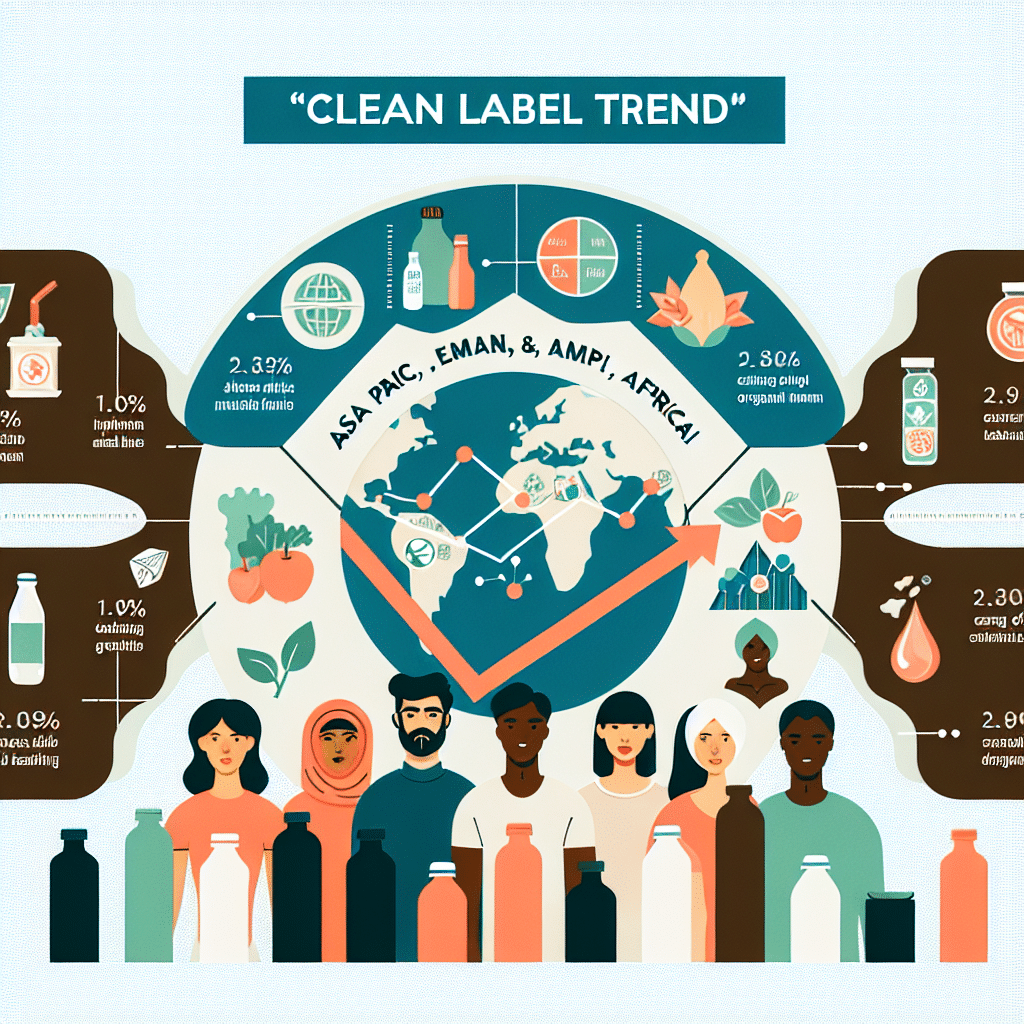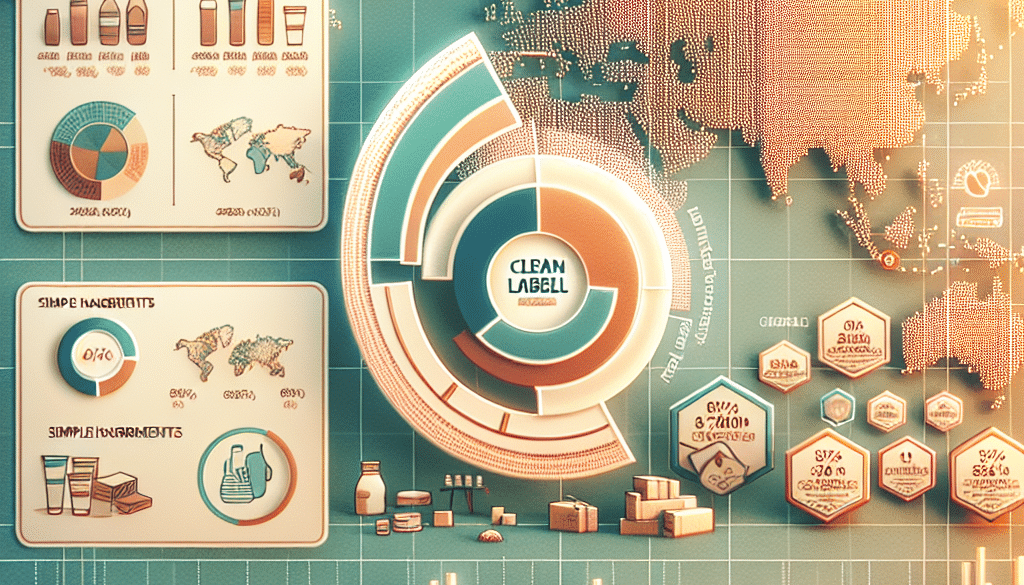Clean Label Trend: APMEA’s Evolving Consumer Preferences
-
Table of Contents
- Clean Label Trend in APMEA: Understanding Evolving Consumer Preferences
- The Rise of Clean Label in APMEA
- Consumer Preferences Shaping the Market
- Case Studies and Statistics
- Challenges and Opportunities for Manufacturers
- Conclusion: Key Takeaways of the Clean Label Trend
- ETchem’s Protein Products: Meeting the Clean Label Demand
Clean Label Trend in APMEA: Understanding Evolving Consumer Preferences

The Asia Pacific, Middle East, and Africa (APMEA) region is witnessing a significant shift in consumer preferences towards clean label products. This trend is driven by an increasing awareness of health and wellness, environmental concerns, and a desire for transparency in food production. In this article, we will explore the clean label trend in the APMEA region, examining how consumer preferences are evolving and what this means for manufacturers and suppliers.
The Rise of Clean Label in APMEA
Clean label is not a regulated term but generally refers to products that contain natural, familiar, simple ingredients that are easy to recognize, understand, and pronounce. Consumers in the APMEA region are increasingly seeking out products with fewer artificial additives, preservatives, and chemicals.
- Increased Health Consciousness: With a growing middle class and rising levels of education, consumers in APMEA are becoming more health-conscious and are looking for products that contribute to a healthy lifestyle.
- Demand for Transparency: There is a growing demand for transparency in the food industry. Consumers want to know where their food comes from, how it is made, and what it contains.
- Environmental Concerns: Consumers are becoming more environmentally conscious and are looking for products that have a minimal environmental impact.
Consumer Preferences Shaping the Market
As consumers in the APMEA region become more discerning, their preferences are shaping the market in several ways:
- Preference for Natural Ingredients: There is a clear preference for natural over synthetic ingredients. This includes natural colors, flavors, and preservatives.
- Simple Ingredient Lists: Consumers are favoring products with shorter ingredient lists, which they perceive as healthier and less processed.
- Non-GMO and Organic Products: There is an increasing demand for non-GMO and organic products as consumers associate these labels with safety and quality.
Case Studies and Statistics
Several case studies and statistics highlight the clean label trend in the APMEA region:
- A study by Nielsen found that 75% of respondents in the Asia-Pacific region believe that the absence of undesirable ingredients is more important than the inclusion of beneficial ones.
- Research by Mintel indicates that over 50% of Chinese consumers are willing to pay more for foods without additives or preservatives.
- In the Middle East, a survey by YouGov revealed that 62% of consumers look for products with no artificial colors or flavors.
These findings demonstrate a clear consumer preference for clean label products across the APMEA region.
Challenges and Opportunities for Manufacturers
The clean label trend presents both challenges and opportunities for food and beverage manufacturers in the APMEA region:
- Reformulation Challenges: Removing artificial ingredients can affect the taste, texture, and shelf life of products, posing significant reformulation challenges.
- Supply Chain Transparency: Manufacturers must ensure transparency in their supply chains to meet consumer demand for information about the origin and production of ingredients.
- Market Differentiation: Clean label products offer an opportunity for brands to differentiate themselves in a crowded market and cater to niche consumer segments.
Conclusion: Key Takeaways of the Clean Label Trend
The clean label trend in the APMEA region is driven by evolving consumer preferences towards health, transparency, and sustainability. As consumers become more informed and discerning, they are demanding products with natural ingredients, fewer additives, and clear labeling. This shift presents challenges for manufacturers in terms of product reformulation and supply chain management but also offers opportunities to differentiate their products and tap into a growing market segment.
ETchem’s Protein Products: Meeting the Clean Label Demand
ETchem is well-positioned to meet the growing demand for clean label protein products in the APMEA region. Their range of collagen products, including marine, fish, bovine, and chicken collagen, aligns with consumer preferences for natural, high-quality protein sources. ETchem’s commitment to quality, transparency, and sustainability makes their offerings an excellent choice for manufacturers looking to cater to the clean label market.
About ETChem:
ETChem, a reputable Chinese Collagen factory manufacturer and supplier, is renowned for producing, stocking, exporting, and delivering the highest quality collagens. They include marine collagen, fish collagen, bovine collagen, chicken collagen, type I collagen, type II collagen and type III collagen etc. Their offerings, characterized by a neutral taste, instant solubility attributes, cater to a diverse range of industries. They serve nutraceutical, pharmaceutical, cosmeceutical, veterinary, as well as food and beverage finished product distributors, traders, and manufacturers across Europe, USA, Canada, Australia, Thailand, Japan, Korea, Brazil, and Chile, among others.
ETChem specialization includes exporting and delivering tailor-made collagen powder and finished collagen nutritional supplements. Their extensive product range covers sectors like Food and Beverage, Sports Nutrition, Weight Management, Dietary Supplements, Health and Wellness Products, ensuring comprehensive solutions to meet all your protein needs.
As a trusted company by leading global food and beverage brands and Fortune 500 companies, ETChem reinforces China’s reputation in the global arena. For more information or to sample their products, please contact them and email karen(at)et-chem.com today.




